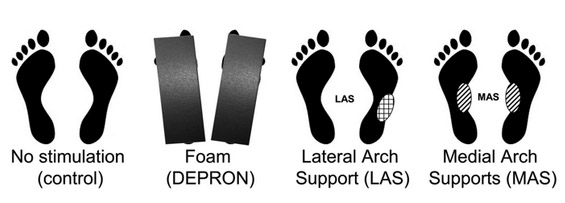Abstract
The estimation of Subjective Visual Vertical (SVV) involves the allocentric, gravitational and egocentric references, which are built by visual, vestibular and somatosensory afferents. Our goals were to assess the influence of plantar cutaneous afferents on the perception of SVV, and to see if there is a difference according to the efficiency of plantar cutaneous afferents. We recruited 48 young and healthy subjects and assessed their SVV and postural performances in quiet stance with a force platform, at 40 or 200 cm, in four ground conditions: on firm ground, on foam, with a bilateral, or with a unilateral 3 mm arch support. We also assessed the efficiency of our subjects’ plantar afferents with the plantar quotient method and divided them in two groups: subjects with a normal use of plantar afferents and subjects with Plantar Exteroceptive Inefficiency (PEI). The results showed significant decreases in the counter clockwise SVV deviation only with the unilateral arch support, at near distance, and among the typically behaving subjects. We conclude that asymmetric foot cutaneous afferents are able to bias the egocentric vertical reference and hence influence the perception of SVV. This influence disappears among subjects with PEI, probably because of a distortion of the plantar signal.

